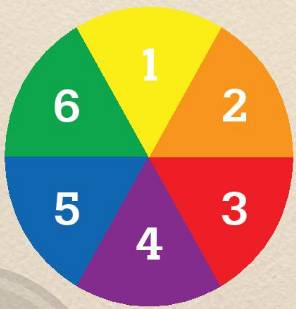She / new hairstyle/ has /a in blue / red and new clothes /and / in terrible colours

Những câu hỏi liên quan
giúp mik với
She / new hairstyle/ has /a in blue / red and new clothes /and / in terrible colours
She has a in blue new hairstyle and red and new clothes in terrible colours
đây nha bn
Đúng 1
Bình luận (1)
1: She / curly / brown / short / hair /chubby cheeks/has/and
2: She / slender/ she / has / black/ hair /long / is /and
3 : beatiful/She / is / but/ is / really/ phain / quite / her sister
4: She / new hairstyle/ has /a in blue / red and new clothes /and / in terrible colours
5: brown/ They/ short / hair / got/green eyes/ and / big ears / have
Thêm dấu phẩy hoặc chấm nếu có thể
1. She / curly / brown / short / hair /chubby cheeks/has/and
→ She has chubby cheeks and curly short brown hair.
2. She / slender/ she / has / black/ hair /long / is /and
→ She is has slender and long black hair
3. beatiful/She / is / but/ is / really/ phain / quite / her sister
→ She is really plain beautiful but quite her sister.
4. She / new hairstyle/ has /a in blue / red and new clothes /and / in terrible colours
→ ......................
5. brown/ They/ short / hair / got/green eyes/ and / big ears / have
→ They have got green eyes, big ears and short brown hair.
Đúng 0
Bình luận (2)
V. Read the text about Alice and correct the sentences:This is Alice. She’s English and she’s from London. She’s thirteen years old. She has fair hair and brown eyes. She has a small nose. Her favourite colours are red, white and blue.1. Alice is French.2. She’s from Manchester.3. She’s 14.4. She has black hair and brown eyes.5. Her favourite colours are red, white and yellow.……………………………………………………………………………………… Nhanh hộ mình với
Đọc tiếp
V. Read the text about Alice and correct the sentences:
This is Alice. She’s English and she’s from London. She’s thirteen years old. She has fair hair and brown eyes. She has a small nose. Her favourite colours are red, white and blue.
1. Alice is French. 2. She’s from Manchester. 3. She’s 14. 4. She has black hair and brown eyes. 5. Her favourite colours are red, white and yellow. | …………………………… …………………………… …………………………… |
Nhanh hộ mình với
1. Alice is French->English
2.She's from Manchester->London
3.She's 14->13
4.She has black->fair hair and brown eyes
5. Her favourite colours are red, white and yellow->blue .
Đúng 1
Bình luận (0)
1. Alice is French. ⇒ English 2. She’s from Manchester. ⇒ London 3. She’s 14. ⇒ 13/thirteen 4. She has black hair and brown eyes. ⇒ fair 5. Her favourite colours are red, white and yellow. ⇒ blue |
Đúng 0
Bình luận (0)
Xem thêm câu trả lời
Read and listen to the text again. Complete the sentences using the words in exercise 1. 1. Yellow and purple are _______ colours.2. Blue and red are _______ colours.3. A _______ colour is bright and strong.4. Green and yellow are _______ colours.5. Orange and purple are _______ colours.6. A _______ colour is pale and soft.The Colour WheelHave you ever thought about how colours are related? Why do some colour combinations look good and others don’t ?According to Isaac Newton, white light consis...
Đọc tiếp
Read and listen to the text again. Complete the sentences using the words in exercise 1.
1. Yellow and purple are _______ colours.
2. Blue and red are _______ colours.
3. A _______ colour is bright and strong.
4. Green and yellow are _______ colours.
5. Orange and purple are _______ colours.
6. A _______ colour is pale and soft.
The Colour Wheel

Have you ever thought about how colours are related? Why do some colour combinations look good and others don’t ?
According to Isaac Newton, white light consists of all the colours of the rainbow. Newton then arranged them in a circle of warm and cool categories.
Red, blue and yellow are the three primary colours on the colour wheel. By mixing two primary colours, we’ve got the secondary colours green, orange and purple.
Colours can also be harmonious or complementary. Complementary colours are directly opposite each other, like red and green. Harmonious colours sit next to each other on the wheel.
Famous artists and decorators have used the colour wheel to choose the right colours ever since then. Everyone agrees that colours can affect our feelings. A vibrant red, for example, is often associated with anger or danger, while yellow is a happy colour. Blue can make people feel calm; pastel pink, which is a gentle pink, sometimes makes them think of romance, and green is the colour of nature.
What’s your favourite colour? What do you associate it with?
1 Yellow and purple are complementary colours.
2 Blue and red are primary colours.
3 A vibrant colour is bright and strong.
4 Green and yellow are harmonious colours.
5 Orange and purple are secondary colours.
6 A pastel colour is pale and soft.
$HaNa$
Đúng 1
Bình luận (0)
1. complementary
2. primary
3. vibrant
4. harmonious
5. secondary
6. pastel
My favorite color is yellow, I associate it with the sun, a beautiful sunflower.
Đúng 0
Bình luận (0)
Read the following passage and mark the letter A, B, C or D on your answer sheet to indicate the correct word or phrase that best fits each numbered blank.Every season there are new clothes and new fashions in the shops. Colours and styles keep ____(23)____. One season black is the in colour, but the next season everyone is wearing orange or pink or grey. The length of womens skirts goes up and down from year to year. A shirt ___(24)___ you once thought was very trendy can look ___(25)____old-fa...
Đọc tiếp
Read the following passage and mark the letter A, B, C or D on your answer sheet to indicate the correct word or phrase that best fits each numbered blank.
Every season there are new clothes and new fashions in the shops. Colours and styles keep ____(23)____. One season black is the 'in' colour, but the next season everyone is wearing orange or pink or grey. The length of women's skirts goes up and down from year to year. A shirt ___(24)___ you once thought was very trendy can look ___(25)____old-fashioned a few years later. And your father's shirts, you always thought were very conservative and traditional, can suddenly become ____(26)____. Keeping up with the fashions can be very expensive. So one way to save money is never to throw your old clothes out. If you wait long enough, the clothes are out of fashion today will be ____(27)_____ in fashion tomorrow. Yesterday's clothes are tomorrow's new fashions.
Question23. A. to change B. changed C . changing D. change
Question 24. A. whom B. that C. what D. who
Question 25. A. stranger B. strangeness C. strange D. strangely
Question 26. A. outdated B. old C. useless D. stylish
Question 27. A. out B. away C. back
read the text about Alice and correct the sentences.
This is Alice. Shes English and shes from London. Shes thirteen years old. She has fair hair and brown eyes. She has a small nose. Her favourite colour are red, white and blue.
26. Alice is French ....................................
27. Shes from Manchester. .......................................
28. Shes 14 ....................................
29. She has black hair and brown eyes. ........
Đọc tiếp
read the text about Alice and correct the sentences.
This is Alice. She's English and she's from London. She's thirteen years old. She has fair hair and brown eyes. She has a small nose. Her favourite colour are red, white and blue.
26. Alice is French ....................................
27. She's from Manchester. .......................................
28. She's 14 ....................................
29. She has black hair and brown eyes. ................................
30. Her favourite colours are red, white and yellow. ............................................
read the text about Alice and correct the sentences.
This is Alice. She's English and she's from London. She's thirteen years old. She has fair hair and brown eyes. She has a small nose. Her favourite colour are red, white and blue.
26. Alice is French->English
27. She's from Manchester->London
28. She's 14->13
29. She has black->fair hair and brown eyes
30. Her favourite colours are red, white and yellow->blue .
Đúng 0
Bình luận (0)
26 . French -> English
27 . Manchester -> London
28 . 14-> 13
29 . black -> fair
30 . yellow -> blue
Đúng 0
Bình luận (0)
26.Alice is English
27.She's from London
28.she's 13 years old
29.she has fair hair and brown eyes . she has a small nose
30.Her favourite colours are red , white and blue
Đúng 0
Bình luận (0)
Xem thêm câu trả lời
Read the following passage and mark the letter A, B, C or D on your answer sheet to indicate the correct answer to each of the questions.Early humans saw a variety of natural colours around them, from the browns and greens of the soil and plants to the deep blues and red of the sky. They painted their bodies with colours from nature to signal aggression toward an enemy, or to make themselves attractive to a mate.A girl and a rainbow of crushed ice flavors at Chowpatty Beach, India. Over the cent...
Đọc tiếp
Read the following passage and mark the letter A, B, C or D on your answer sheet to indicate the correct answer to each of the questions.
Early humans saw a variety of natural colours around them, from the browns and greens of the soil and plants to the deep blues and red of the sky. They painted their bodies with colours from nature to signal aggression toward an enemy, or to make themselves attractive to a mate.
A girl and a rainbow of crushed ice flavors at Chowpatty Beach, India. Over the centuries, the sources of colours such as blue, purple, and red were high valued and they were often worth as much as gold. In the 19th century, a young chemistry student manufactured the first synthetic dye, and suddenly the world became a much more colorful place. In the 20th century, scientists discovered the psychological effects of colours, and people found ways to use this discovery to influence our feelings and behaviors.
RED
Red, colour of blood, symbolises fire, love and anger. In Eastern cultures, people believe it brings luck, wealth and success. In humans, the color red can send different messages. Some people redden, for example, when they are angry or embarrassed. Researchers have discovered that in sports the team that is wearing red is more likely to win. Why? Because red seems to be the color that signals dominance, giving those dressed in red an advantage in sporting events. In many animal species (including humans), contact with this bold color causes the heart rate to increase. However, one of red’s lighter shades, pink, can have the opposite effect on people. Man in prisons are less agressive when the walls are a specific shade of pink.
YELLOW
Yellow, the colour that comes to mind when we think of sunshine, is found throughout nature and the man-made world as a colour that commands attention; indeed, it is one of the easiest colours to see. This highly visible shade is found on everything from school buses to traffic signs and pens that we use to highlight important information in a text. The colour is also used to caution people; football players, for example, are shown a yellow card as a reminder to behave. It can be used as a stimulant as well: in a number of studies, yellow has been found to help children focus on their work and do better at school.
BLUE
Blue, the colour of the sky and sea, is associated in many cultures with water, religious objects, and protection against evil. Its darker shades represent calm, stability and power. Dark blue, for example, is the colour of the business suit or police uniform; it tells others, ‘I am in control,’ or ‘I am trustworthy.’ Blue is also associated with sadness. It’s common in English, for example, when you are feeling sad or depressed, to talk about ‘feeling blue,’ while in Iran, blue is the colour of mourning, worn when a person dies. Like pink, blue has a calming effect on people. Rooms painted blue help people to relax or sleep. Sleeping pills are often coloured blue to suggest exactly this idea. This colour also seems to reduce feelings of hunger. Blue food is rarely seen in nature, and when it is, such food is usually no longer healthy to consume. It’s just one more example of the power that colour can hold over us.
What are English speakers refering to when they talk about “feeling blue”?
A. being in control
B. being upset when someone dies
C. being calm
D. being sad
Đáp án D
Kiến thức: Đọc hiểu
Giải thích:
Người Anh đề cập gì khi nói đến "cảm thấy xanh"?
A. kiểm soát
B. buồn bã khi ai đó chết
C. bình tĩnh
D. buồn
“feeling blue” = sad: buồn bã
Đúng 0
Bình luận (0)
Read the following passage and mark the letter A, B, C or D on your answer sheet to indicate the correct answer to each of the questions.Early humans saw a variety of natural colours around them, from the browns and greens of the soil and plants to the deep blues and red of the sky. They painted their bodies with colours from nature to signal aggression toward an enemy, or to make themselves attractive to a mate.A girl and a rainbow of crushed ice flavors at Chowpatty Beach, India. Over the cent...
Đọc tiếp
Read the following passage and mark the letter A, B, C or D on your answer sheet to indicate the correct answer to each of the questions.
Early humans saw a variety of natural colours around them, from the browns and greens of the soil and plants to the deep blues and red of the sky. They painted their bodies with colours from nature to signal aggression toward an enemy, or to make themselves attractive to a mate.
A girl and a rainbow of crushed ice flavors at Chowpatty Beach, India. Over the centuries, the sources of colours such as blue, purple, and red were high valued and they were often worth as much as gold. In the 19th century, a young chemistry student manufactured the first synthetic dye, and suddenly the world became a much more colorful place. In the 20th century, scientists discovered the psychological effects of colours, and people found ways to use this discovery to influence our feelings and behaviors.
RED
Red, colour of blood, symbolises fire, love and anger. In Eastern cultures, people believe it brings luck, wealth and success. In humans, the color red can send different messages. Some people redden, for example, when they are angry or embarrassed. Researchers have discovered that in sports the team that is wearing red is more likely to win. Why? Because red seems to be the color that signals dominance, giving those dressed in red an advantage in sporting events. In many animal species (including humans), contact with this bold color causes the heart rate to increase. However, one of red’s lighter shades, pink, can have the opposite effect on people. Man in prisons are less agressive when the walls are a specific shade of pink.
YELLOW
Yellow, the colour that comes to mind when we think of sunshine, is found throughout nature and the man-made world as a colour that commands attention; indeed, it is one of the easiest colours to see. This highly visible shade is found on everything from school buses to traffic signs and pens that we use to highlight important information in a text. The colour is also used to caution people; football players, for example, are shown a yellow card as a reminder to behave. It can be used as a stimulant as well: in a number of studies, yellow has been found to help children focus on their work and do better at school.
BLUE
Blue, the colour of the sky and sea, is associated in many cultures with water, religious objects, and protection against evil. Its darker shades represent calm, stability and power. Dark blue, for example, is the colour of the business suit or police uniform; it tells others, ‘I am in control,’ or ‘I am trustworthy.’ Blue is also associated with sadness. It’s common in English, for example, when you are feeling sad or depressed, to talk about ‘feeling blue,’ while in Iran, blue is the colour of mourning, worn when a person dies. Like pink, blue has a calming effect on people. Rooms painted blue help people to relax or sleep. Sleeping pills are often coloured blue to suggest exactly this idea. This colour also seems to reduce feelings of hunger. Blue food is rarely seen in nature, and when it is, such food is usually no longer healthy to consume. It’s just one more example of the power that colour can hold over us.
Yellow is used to highlight information in a text because
A. it is an important colour.
B. it can be used to caution people.
C. it is a highly visible colour.
D. people prefer this colour to other colours.
Đáp án B
Kiến thức: Đọc hiểu
Giải thích:
Màu vàng được sử dụng để làm nổi bật thông tin trong một văn bản vì
A. nó là một màu sắc quan trọng.
C. nó là một màu dễ nhận thấy.
B. nó có thể được dùng để cảnh báo mọi người.
D. người ta thích màu này hơn màu khác.
Thông tin: This highly visible shade is found on everything from school buses to traffic signs and pens that we use to highlight important information in a text. The colour is also used to caution people
Đúng 0
Bình luận (0)
Read the following passage and mark the letter A, B, C or D on your answer sheet to indicate the correct answer to each of the questions.Early humans saw a variety of natural colours around them, from the browns and greens of the soil and plants to the deep blues and red of the sky. They painted their bodies with colours from nature to signal aggression toward an enemy, or to make themselves attractive to a mate.A girl and a rainbow of crushed ice flavors at Chowpatty Beach, India. Over the cent...
Đọc tiếp
Read the following passage and mark the letter A, B, C or D on your answer sheet to indicate the correct answer to each of the questions.
Early humans saw a variety of natural colours around them, from the browns and greens of the soil and plants to the deep blues and red of the sky. They painted their bodies with colours from nature to signal aggression toward an enemy, or to make themselves attractive to a mate.
A girl and a rainbow of crushed ice flavors at Chowpatty Beach, India. Over the centuries, the sources of colours such as blue, purple, and red were high valued and they were often worth as much as gold. In the 19th century, a young chemistry student manufactured the first synthetic dye, and suddenly the world became a much more colorful place. In the 20th century, scientists discovered the psychological effects of colours, and people found ways to use this discovery to influence our feelings and behaviors.
RED
Red, colour of blood, symbolises fire, love and anger. In Eastern cultures, people believe it brings luck, wealth and success. In humans, the color red can send different messages. Some people redden, for example, when they are angry or embarrassed. Researchers have discovered that in sports the team that is wearing red is more likely to win. Why? Because red seems to be the color that signals dominance, giving those dressed in red an advantage in sporting events. In many animal species (including humans), contact with this bold color causes the heart rate to increase. However, one of red’s lighter shades, pink, can have the opposite effect on people. Man in prisons are less agressive when the walls are a specific shade of pink.
YELLOW
Yellow, the colour that comes to mind when we think of sunshine, is found throughout nature and the man-made world as a colour that commands attention; indeed, it is one of the easiest colours to see. This highly visible shade is found on everything from school buses to traffic signs and pens that we use to highlight important information in a text. The colour is also used to caution people; football players, for example, are shown a yellow card as a reminder to behave. It can be used as a stimulant as well: in a number of studies, yellow has been found to help children focus on their work and do better at school.
BLUE
Blue, the colour of the sky and sea, is associated in many cultures with water, religious objects, and protection against evil. Its darker shades represent calm, stability and power. Dark blue, for example, is the colour of the business suit or police uniform; it tells others, ‘I am in control,’ or ‘I am trustworthy.’ Blue is also associated with sadness. It’s common in English, for example, when you are feeling sad or depressed, to talk about ‘feeling blue,’ while in Iran, blue is the colour of mourning, worn when a person dies. Like pink, blue has a calming effect on people. Rooms painted blue help people to relax or sleep. Sleeping pills are often coloured blue to suggest exactly this idea. This colour also seems to reduce feelings of hunger. Blue food is rarely seen in nature, and when it is, such food is usually no longer healthy to consume. It’s just one more example of the power that colour can hold over us.
The first man-made colors were produced
A. only recently
B. in the 20th century
C. in the 19th century
D. centuries ago
Đáp án C
Kiến thức: Đọc hiểu
Giải thích:
Những màu nhân tạo đầu tiên được sản xuất
A. gần đây
B. trong thế kỷ 20
C. trong thế kỷ 19
D. nhiều thế kỷ trước
Thông tin: In the 19th century, a young chemistry student manufactured the first synthetic dye, and suddenly the world became a much more colorful place.
Đúng 0
Bình luận (0)






















